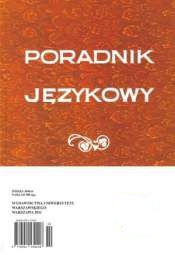ZABURZENIA MOWY W CHOROBIE WILSONA
Speech Disorders in Wilson Disease
Author(s): Olga Jauer-NiworowskaSubject(s): Language and Literature Studies
Published by: Dom Wydawniczy ELIPSA
Keywords: disorder; wilson; zaburzenie; mowa; speech
Summary/Abstract: The aim of the research. Characterization of speech disorders in patients with Wilson disease. Justification. Lack of detailed data in literature concerning the speech condition in patients with this disease, the description of speech disorders serves the appropriate formulation of recommendations for logopedic therapy of patients with Wilson disease and for patients with similar speech disorders in the course of other diseases which damage the basal ganglia. Procedure. The paper is based on cases studies. Clinical procedures: interview, clinical examination of non-verbal motor of articulators, speech examination based on the recorded verbal material and its quantitative and qualitative analysis. The research results were reviewed by independent competent judges. Speech disorders were described in connection with the results of the research concerning non-verbal articulators and the respiratoryphonic- articulatory potential of the patients. Research group and control group characteristics. 51 patients with Wilson disease participated in the research (25 men and 26 women). They were patients of II Neurological Clinic of the Institute of Psychiatry and Neurology in Warsaw, aged between 15 and 69. The control group included physically healthy people without speech disorders, similar to the research group in terms of age and sex. Results. The patients had symptoms of dynamic breathing disorders but there were no cases of static ones. The research showed considerable diversity of the level of disorders intensity (from lack of speech to trace phonemes realization disorders). The condition of the patients' speech was the outcome of the realization and prosodic disorders and the retained motor abilities of the speech apparatus and the applied compensation strategies. Dysarthia occurred in patients with neurological form of the disease. The most common types of dysarthic disorders include: rigid, rigid-hyperkinetic and rigid-dystonic dysarthia. The non-verbal motor disorders of the articulators were often more intensified than realization disorders or they anticipated the occurrence of speech disorders.Practical conclusions. The assessment of the examined patients' speech condition should take into account: the quality and the frequency of the motor disorders, the retained motor abilities and the compensation strategies. It is recommended to start exercising articulators' motor, still in the subclinical period. It is advised to start exercising with verbal material as quickly as possible. The choice of material should take into account diagnostic data.
Journal: Poradnik Językowy
- Issue Year: 2007
- Issue No: 08
- Page Range: 66-79
- Page Count: 14
- Language: Polish
- Content File-PDF

